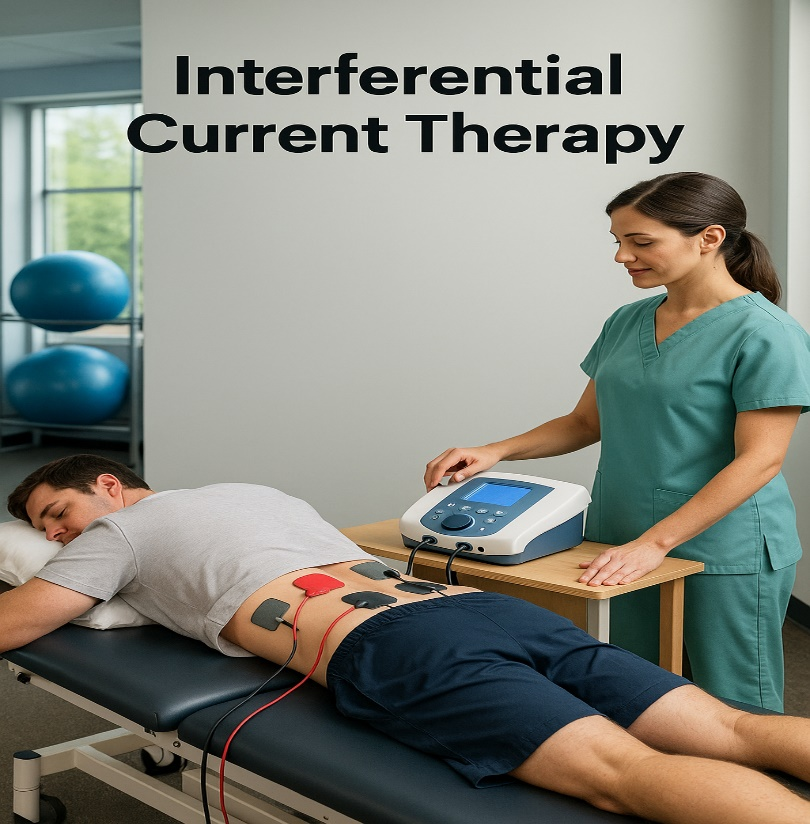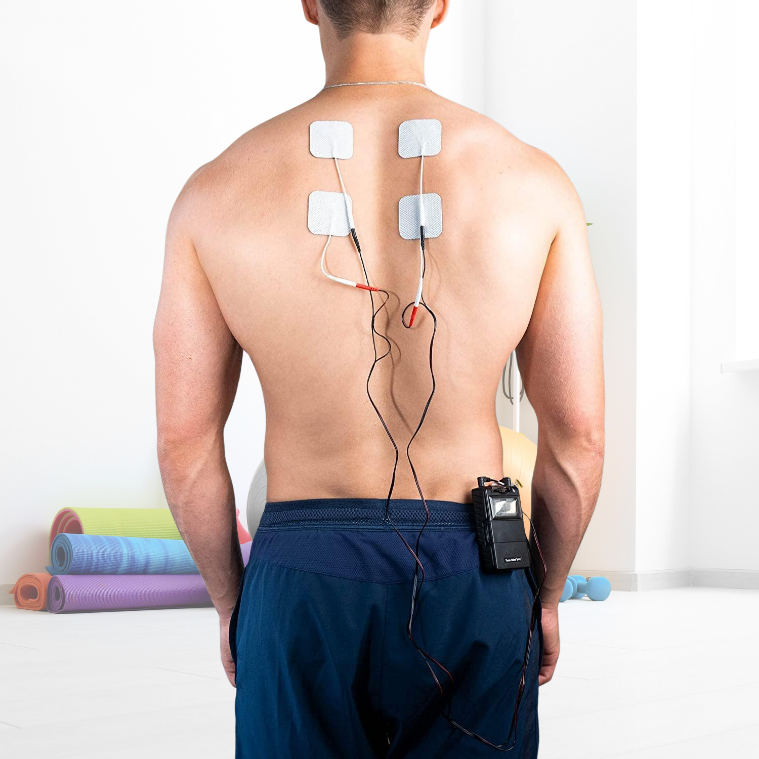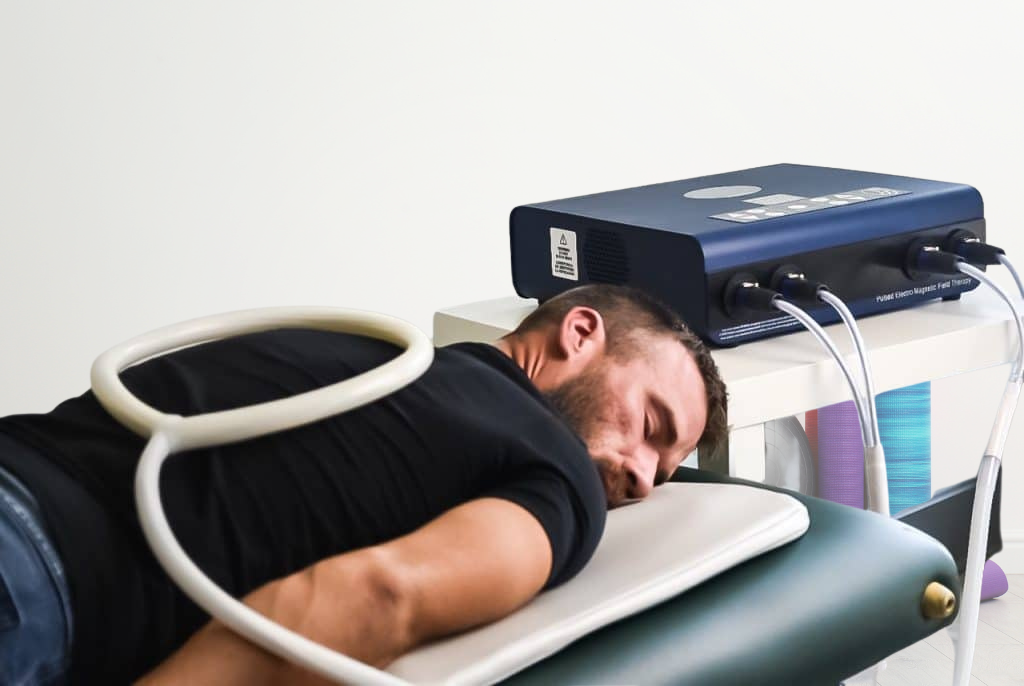Electrotherapy is a therapeutic modality that utilizes electrical energy to relieve pain, stimulate muscles, and promote tissue healing. In the context of spinal pain—whether due to degenerative disc disease, herniated discs, spinal stenosis, or post-operative conditions—electrotherapy can be a valuable non-invasive treatment option.
Types of Electrotherapy Used in Spinal Pain
1) Transcutaneous Electrical Nerve Stimulation (TENS):
- Mechanism: Delivers low-voltage electrical currents through surface electrodes.
- Purpose: Primarily for pain relief through the gate control theory of pain modulation.
- Benefits: Reduces the perception of pain without the use of medication; can be self-administered at home under guidance.
2) Interferential Current Therapy (IFC):
- Mechanism: Uses two medium-frequency currents that intersect to create a low-frequency effect deep in tissues.
- Purpose: Pain relief and reduction of muscle spasms.
- Benefits: Better tissue penetration compared to TENS; often more comfortable and effective for deeper spinal structures.
3) Electrical Muscle Stimulation (EMS):
- Mechanism: Induces muscle contraction using electrical impulses.
- Purpose: Muscle re-education, strengthening, and prevention of muscle atrophy, especially post-surgery.
- Benefits: Helps restore normal muscular function, particularly in cases of spinal instability.
4) Pulsed Electromagnetic Field Therapy (PEMF):
- Mechanism: Uses electromagnetic fields to influence cellular activity.
- Purpose: Promotes healing of bone and soft tissue.
- Benefits: Used for conditions like spinal fractures or delayed bone healing.
5) Percutaneous Electrical Nerve Stimulation (PENS):
- Mechanism: Involves needle electrodes inserted through the skin to stimulate peripheral nerves.
- Purpose: Targets both acute and chronic spinal pain.
- Benefits: Combines the benefits of acupuncture with electrical stimulation.
Clinical Applications in Spinal Pain:
- Acute and Chronic Low Back Pain
- Cervical Spine Disorders
- Postoperative Spine Pain
- Sciatica and Radiculopathy
- Myofascial Pain Syndromes
Electrotherapy is often used in conjunction with physical therapy, pharmacologic treatment, or interventional pain procedures for a multimodal approach.
Advantages of Electrotherapy:
- Non-invasive and generally safe
- Minimal side effects
- Reduces dependence on pain medication
- Can improve patient mobility and quality of life
- Enhances blood circulation and tissue healing
Considerations and Contraindications:
While electrotherapy is generally safe, it should be used with caution or avoided in the following scenarios:
- Patients with pacemakers or implanted defibrillators
- Pregnancy (especially abdominal or lower back applications)
- Active infection or malignancy at the site of treatment
- Open wounds (unless specifically designed for wound healing)
A thorough evaluation by a healthcare provider is essential before initiating treatment to ensure safety and optimal outcomes.
Conclusion:
Electrotherapy represents a valuable adjunct in the management of spinal pain. By modulating pain signals, enhancing muscle function, and supporting tissue healing it can significantly contribute to improved patient outcomes. However, its effectiveness is maximized when integrated into a comprehensive rehabilitation plan tailored to the individual patient’s needs.
About Authors
Dr. Muhammad Mahmood Ahmad is a Spinal as well as an Orthopedic Surgeon with over 14 years of experience currently practicing at Razia Saeed Hospital, Multan.









